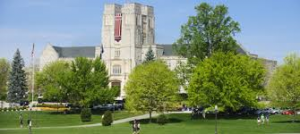In December of 2013, New York enacted the Nonprofit Revitalization Act (the NPRA) which impacted all New York not-for-profit corporations as it sought to not only update New York’s Not-for-Profit Corporation Law (NPCL) but it also enacted several measures intended to strengthen the internal controls of nonprofits. The enactment of the NPRA impacted all New York nonprofits, with the majority of not-for-profit corporations taking action to update their by-laws and adopt new conflict of interest and whistleblower policies to comply with the changes to the NPCL.
While the NPRA was heralded as a much needed reform to the NPCL, there have been a number of issues created by the practical application of the NPRA’s measures. These issues have resulted in multiple clarifications to the NPRA, with the most recent being amendments adopted on December 11, 2015, when Governor Andrew Cuomo signed into law three changes to the NPRA (the December Amendments, found at: A. 7641, S. 5870, S. 5868 – A) which became effective immediately.
Among the changes made to the NPCL by the December Amendments, the revisions to several key definitions and provisions related to the conflict of interest and related party transaction rules are likely to have the greatest impact on the regular operations of nonprofits (the text of these revisions can be found in Senate Bill S. 5868-A).
First, the December Amendments broadened the scope of the conflict of interest and related party transaction rules by amending the definitions of "independent director", "relative" and "related party", and at the same time slightly narrowed the scope of these rules with revisions to the definitions of "affiliate" and "key employee". The changes to the definition of "independent director" further expand the classifications of individuals that do not qualify as independent directors to include certain individuals related to the corporation’s outside auditor. In short, any individual who serves as a director of a nonprofit and is, or has a relative who is, "a current owner, whether wholly or partially, director, officer or employee of the corporation’s outside auditor or who has worked on the corporation’s audit at any time during the past three years" is not an independent director.
The definition of "relative" was amended to clarify that domestic partners of a person’s children, grandchildren and great-grandchildren are relatives for purposes of the NPCL, where, prior to the December Amendments, only the domestic partners of the individual in question were included as relatives for purposes of the NPCL. Finally, the definition of "related party" was expanded to include "any other person who exercises the powers of directors, officers or key employees over the affairs of the corporation or any affiliate of the corporation" and such person’s relatives and controlled entities, in addition to the directors, officers and key employees, their relatives and controlled entities, of a corporation and its affiliates.
The scope of the conflict of interest and related party transaction rules were narrowed slightly with the revision to the definition of "affiliate" that eliminated entities under common control of a corporation from this definition. Following the December Amendments, affiliates are limited to "any entity controlled by or in control of" a corporation. Also, the definition of "key employee" was revised to provide that a key employee means any person in a position to exercise substantial influence over the affairs of a corporation as provided under the Internal Revenue Code (IRC) rules and regulations related to excess benefit transactions under IRC Section 4958 "to the extent such provisions are applicable." Many organizations will find this clarifying language helpful because the excess benefit transaction regulations include several classifications of individuals that could be considered as key employees that often have no application to an organization. For example, the IRC regulations include substantial contributors as potential "key employees" and this often has no application to organizations in the context of the NPCL’s conflict of interest and related party transaction rules.
Other changes enacted by the December Amendments that impact the application of the new conflict of interest and related party transaction rules relate to quorum requirements and the ability of an interested director to provide information related to a potential conflict of interest transaction. First, the December Amendments revise the quorum requirements found at NPCL §708(d) to clarify that if a quorum is present for a meeting the quorum will not be broken if a director is required to leave the meeting due to a conflict of interest or related party transaction. Second, the December Amendments revise provisions related to the operations of a corporation’s audit committee (NPCL §712-a(e)) and a corporation’s conflict of interest policy (NPCL §715-a(b)(3)) to provide that, although interested directors cannot participate in deliberations or voting on an interested matter, the Board or audit committee may request "that a person with an interest in the matter present information as background or answer questions at a committee or board meeting prior to the commencement of deliberations or voting related thereto." Finally, the December Amendments revised the annual conflict of interest disclosure statement requirements to provide that these disclosures may be submitted to a designated compliance officer, instead of the corporation’s Secretary.
Similar to the changes impacting the conflict of interest and related party transaction rules, the December Amendments made clarifications to NPCL provisions related to the compensation of directors. The NPRA amended NPCL §514(b) regarding compensation of members, directors or officers, to provide that reasonable compensation may be paid to these individuals but that no person who may benefit from such compensation may be present at or otherwise participate in any board or committee deliberation or vote concerning such person’s compensation. This provision created problems in its practical application with respect to the compensation of directors because if the board of a not-for-profit intended to set a uniform rate for director compensation, under the terms of NPCL §514(b) no director would be able to participate in the decision making process because each person would benefit from the compensation. The December Amendments, amend NPCL §514(b) to clarify that although an individual who may benefit from a compensation decision cannot be present or participate in a deliberation or vote on a compensation award, nothing in NPCL Sections 514(b) or 715(h) [related party transactions] shall be construed to prohibit "a director from deliberating or voting concerning compensation for service on the board that is to be made available or provided to all directors of the corporation on the same or substantially similar terms."
In addition to making numerous changes impacting the conflict of interest, related party transaction and director compensation rules, the December Amendments made several other important changes.
First, the NPRA had changed the traditional committee structure under the NPCL from "standing" and "special" committees, to new classifications of "committees of the board" and "committees of the corporation." The NPRA clearly provided that committees of the corporation did not have any authority to bind the corporation’s board but left ambiguity as to whether non-directors could be elected or appointed to such committees. The December Amendments clarify that non-directors may be elected to committees of the corporation in accordance with a corporation’s by-laws or, if the by-laws are silent, in the same manner as officers of a corporation are elected.
Second, the NPRA created a new requirement that certain corporations must adopt a whistleblower policy and that the whistleblower policy must be distributed to all of the corporation’s directors, officers, employees and volunteers who provide substantial services. Numerous clients have inquired as to whether posting the corporation’s whistleblower policy on their website or in their offices would satisfy this requirement. Fortunately the December Amendments included clarifying language directly addressing these concerns providing that, for purposes of satisfying the distribution requirement, a whistleblower policy may be posted on a corporation’s website or at the corporation’s offices in a conspicuous location that is accessible to employees and volunteers.
Third, the December Amendments extend the effective date of the provision added to the NPCL by the NPRA prohibiting the chair of a not-for-profit from also being an employee of the not-for-profit from January 1, 2016 to January 1, 2017, giving all not-for-profits an additional year to make any necessary changes related to this new prohibition.
In sum, the December Amendments provide a number of helpful clarifications to the changes to the NPCL enacted by the NPRA in addition to several substantive amendments impacting the conflict of interest and related party transaction rules affecting all New York not-for-profit corporations. While most corporations that updated their governing documents to comply with the changes enacted by the NPRA will not require significant, if any, further revisions to these documents; these documents should be reviewed to understand the impact of the December Amendments and whether any updates are required. The December Amendments also serve as a reminder for corporations that have not taken steps to comply with the NPRA that action should be taken as soon as possible to comply with the NPRA’s requirements as more provisions will continue to become effective in the near future.
 In a new update posted to its website, the New York State Education Department has indicated that it is continuing work on its electronic system for the submission and recording of this year’s required certificates of compliance under Education Law Articles 129-A and 129-B, and the copies of written rules and polices required to be filed this year pursuant to Article 129-B. As before, the Department indicates that once the system is operational, information will be posted on its website on how to access the system and submit the required documentation. As institutions are aware, the statutory deadline for filing certifications, rules and policies is July 1 (though institutions do not risk loss of State funding for failure to file until September 1). However, all documentation must be submitted through the yet-to-be-released electronic filing system, and the Department will not accept, or record as received, hard copy documents or documents submitted via email. Consequently, institutions necessarily find themselves in a holding pattern until further notice.
In a new update posted to its website, the New York State Education Department has indicated that it is continuing work on its electronic system for the submission and recording of this year’s required certificates of compliance under Education Law Articles 129-A and 129-B, and the copies of written rules and polices required to be filed this year pursuant to Article 129-B. As before, the Department indicates that once the system is operational, information will be posted on its website on how to access the system and submit the required documentation. As institutions are aware, the statutory deadline for filing certifications, rules and policies is July 1 (though institutions do not risk loss of State funding for failure to file until September 1). However, all documentation must be submitted through the yet-to-be-released electronic filing system, and the Department will not accept, or record as received, hard copy documents or documents submitted via email. Consequently, institutions necessarily find themselves in a holding pattern until further notice.

 On June 2, 2016, the New York State Education Department and the New York State Office of Campus Safety published a 52-page joint
On June 2, 2016, the New York State Education Department and the New York State Office of Campus Safety published a 52-page joint  The Fable Children’s fables are often an overlooked source of wisdom. Take for example Aesop’s 17th century fable “The Monkey and the Cat.” As the story goes, a cat and monkey lived in the same house as pets. The monkey, desiring to eat the chestnuts roasting on the family hearth, dupes the cat into retrieving them by flattering the cat’s greater skill in such matters. The problem for the cat, however, was that as soon as she retrieved the nuts, the monkey would gobble them up, leaving an unfortunate ending:
The Fable Children’s fables are often an overlooked source of wisdom. Take for example Aesop’s 17th century fable “The Monkey and the Cat.” As the story goes, a cat and monkey lived in the same house as pets. The monkey, desiring to eat the chestnuts roasting on the family hearth, dupes the cat into retrieving them by flattering the cat’s greater skill in such matters. The problem for the cat, however, was that as soon as she retrieved the nuts, the monkey would gobble them up, leaving an unfortunate ending: